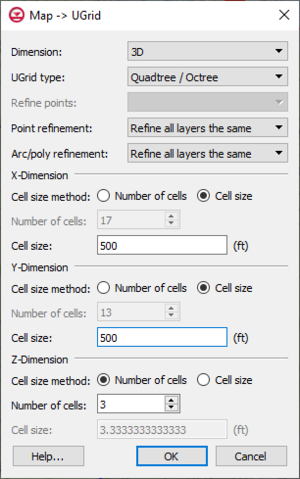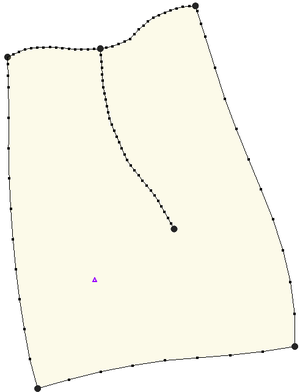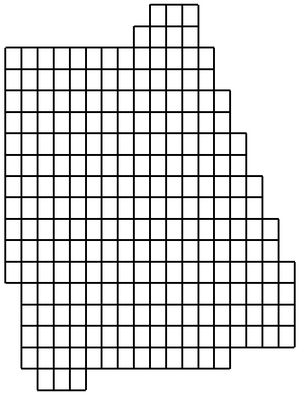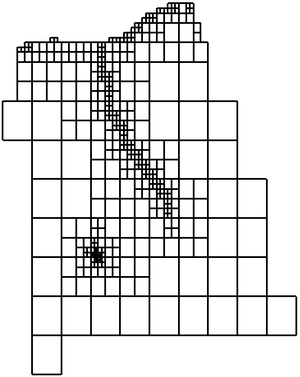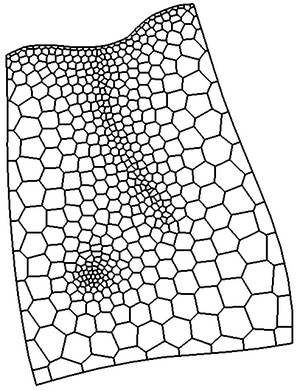GMS:Creating and Editing UGrids
| This contains information about functionality available starting at GMS version 10.0. The content may not apply to other versions. |
| UGrid Module | |
|---|---|
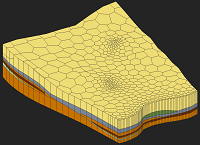 | |
| UGrid | |
| Creating and Editing | |
| Viewing Modes | |
| Converting to Other Data Types | |
| Exporting UGrids | |
| UGrid Interpolation | |
| More | |
| Display Options | |
| Tool Palette | |
| Cell Properties | |
| UGrid Commands | |
There are a number of ways to create UGrids. Currently UGrids cannot be edited after they are created.
Contents
Importing
UGrids can be imported from a VTK XML file by selecting the File|Open command or by dragging and dropping the file onto the GMS window. GMS recognizes the ".vtu" extension, which by convention is the extension used for a VTK XML file containing an unstructured grid.
Map -> UGrid
The Map -> UGrid command creates a UGrid from feature objects. It can be found in the Feature Objects menu and in some pop-up menus when right-clicking on items in the Project Explorer (Coverage, Grid Frame). The command opens the Create UGrid dialog.
Create UGrid Dialog
- Dimension - Specifies whether a 2D or 3D UGrid will be created.
- UGrid type
- Regular (not refined) - Creates a grid with rectangular cells that are not refined.
- Quad tree - Creates a grid with rectangular cells that is refined around refine points and arcs with cell sizes increasing in size with distance from the points and arcs.
- Voronoi - Creates a Voronoi grid with cells of various sizes and shapes to meet the Voronoi criteria. The active coverage must contain a polygon because it is first meshed with a triangular mesh and refined around points and arcs.
- Refine points - If the quad tree option is selected and refine points exist in multiple coverages, specifies which refine points to use.
- X, Y, Z number of cells
- If not using the Voronoi UGrid type, the size and number of cells in the X, Y and Z dimensions can be specified. For quad tree UGrids, the cell size represents the large, unrefined size because the small, refined size is determined by the refine points and arcs.
If a grid frame exists, it is used to determine the location of the grid. If polygons exist and the Regular or Quad tree options are used, any cells that are not inside a polygon are removed.
Conversion From Other Data Types
The following data types can be converted to UGrids by right-clicking on the object in the Project Explorer and selecting the Convert To > UGrid command from the pop-up menu.
- TINs
- 2D Grids
- 3D Grids
- 2D Mesh
- 3D Mesh
- Polygons in a coverage (Map To > Polygons -> UGrid)
- Polygon shape files in the GIS Module
Horizons
The Horizons -> UGrid command (in the TINs and Boreholes menus) uses horizons to create a 3D UGrid.
| GMS – Groundwater Modeling System | ||
|---|---|---|
| Modules: | 2D Grid • 2D Mesh • 2D Scatter Point • 3D Grid • 3D Mesh • 3D Scatter Point • Boreholes • GIS • Map • Solid • TINs • UGrids | |
| Models: | FEFLOW • FEMWATER • HydroGeoSphere • MODAEM • MODFLOW • MODPATH • mod-PATH3DU • MT3DMS • MT3D-USGS • PEST • PHT3D • RT3D • SEAM3D • SEAWAT • SEEP2D • T-PROGS • ZONEBUDGET | |
| Aquaveo | ||
